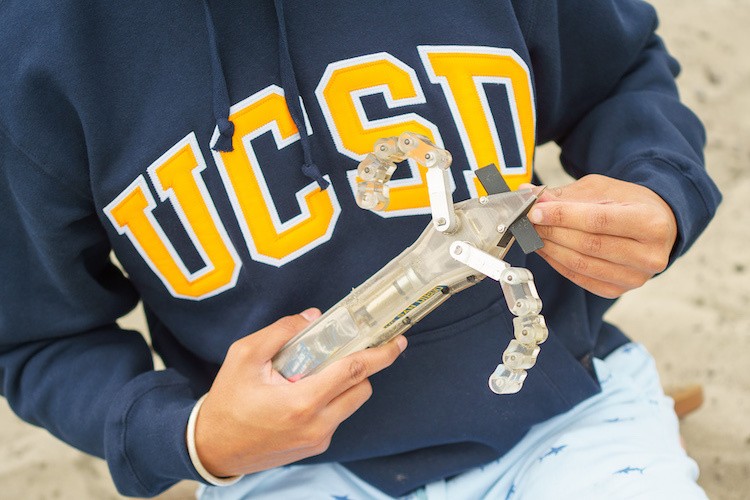Researchers at the University of California San Diego have developed a remarkable sand-swimming robot inspired by the movements of baby sea turtles.
This innovative robot is capable of traversing through the sand at a depth of 5 inches with a speed of 1.2 millimeters per second, roughly equivalent to 4 meters or 13 feet per hour. Although its pace may appear slow, it is comparable to other subterranean creatures like worms and clams.

Sand-Swimming Robot Inspired by Baby Sea Turtles
The sand-swimming robot is equipped with force sensors at the end of its limbs, enabling it to detect obstacles while in motion. More interestingly, it operates untethered and can be conveniently controlled through WiFi.
The development of robots capable of moving through sand presents unique challenges due to the higher forces and increased susceptibility to damage compared to robots operating in air or water.
Nonetheless, overcoming these obstacles offered opportunities for the researchers, including inspection of grain silos, measurements for soil contaminants, seafloor digging, extraterrestrial exploration, and search and rescue missions.
The development of this sand-swimming robot resulted from extensive experiments conducted by a team of roboticists at UC San Diego to gain a deeper understanding of sand and explore potential methods of robot locomotion in this challenging environment.
Sand poses various difficulties due to friction between sand grains, leading to substantial forces and complexities in sensing obstacles. Moreover, depending on the context, sand exhibits fluid-like and solid-like behavior, further complicating robot mobility.
In their quest for an ideal design, the research team drew inspiration from sea turtle hatchlings, observing their enlarged front fins that facilitate their surfacing after hatching. These turtle-like flippers can generate substantial propulsive forces, enable steering, and detect obstacles.
To ensure effective movement through sand, the researchers performed extensive simulations and testing, ultimately settling on a tapered body design and a shovel-shaped nose for the robot.
Read Also : PIGINet: MIT's New AI to Enhance Robots' Planning, Problem Solving, and MORE by as much as 80 Percent
Strong and Streamlined
Lead author Shivam Chopra, a Ph.D. student in the research group of Professor Nick Gravish at the Jacobs School of Engineering at UC San Diego, explained the need to build a strong and streamlined robot to navigate the challenges of sand-swimming effectively.
The robot relies on monitoring changes in torque generated by the movement of its flippers to detect obstacles. While it can identify obstacles above its body, it lacks the ability to perceive objects below or directly in front of it.
To regulate the robot's depth in the sand, researchers implemented two foil-like surfaces, known as "terrafoils," on the sides of its nose. This addition facilitates controlled lift, ensuring the robot's nose remains appropriately oriented toward the surface.
The researchers conducted comprehensive testing in a 5-foot-long tank within their lab and at La Jolla Shores, a beach near the UC San Diego campus. Throughout these tests, the team observed that the robot's speed reduced in wet sand, which poses increased resistance.
Looking ahead, the research team aims to further enhance the robot's speed and enable it to burrow into sand in addition to its current capability of digging itself out.
This research represents a significant step forward in the technology of sand-swimming robotics, potentially opening up new possibilities for exploration and various applications in challenging terrains. The findings of the team were published in Advanced Intelligent Systems.
Related Article : Amazon Astro Robot For Home Security: How Does it Work?

ⓒ 2025 TECHTIMES.com All rights reserved. Do not reproduce without permission.




